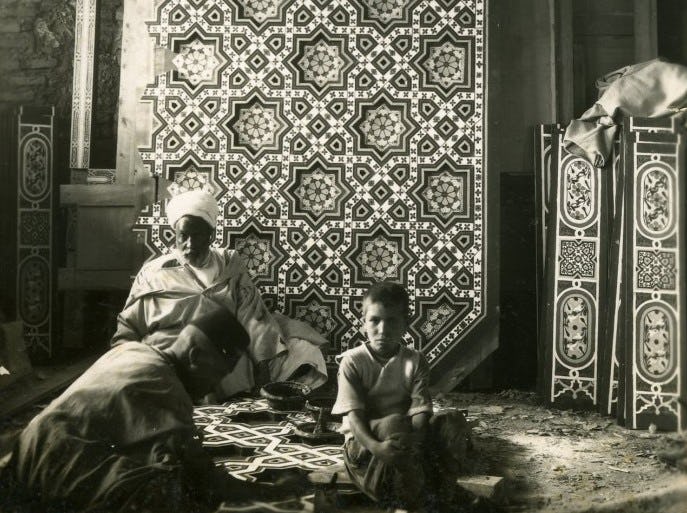Engraved Tray with Central Inscription Cartouche
Date19th - 20th century
PeriodQajar
MediumCopper alloy
DimensionsOverall: 1 3/16 x 23 1/2 x 10 3/8 in. (3 x 59.7 x 26.4cm)
ClassificationsMetalwork
Credit LineCourtesy of the Doris Duke Foundation for Islamic Art
Object number54.213.1
DescriptionThis rectangular copper tray is engraved with a carpet-like pattern with a central medallion containing Persian inscriptions surrounded by dense, interlacing floral motifs. Smaller inscriptions are inscribed on the top and bottom of the medallion. Chinese medallions occupy each corner of the tray. The border contains bands of trefoils and scrolling vine motifs. The short walls of the tray have a narrow, flared rim with lightly etched, interlacing lines. The reverse of the tray is highly textured and has two applied hooks. The large inscription, boldly inscribed in the center of the tray, contains mistakes but may be intended to read, "May luck be friendly to you. May good fortune also be your friend." The inscription on the top of the tray reads, "The world in an ephemeral abode," while the bottom inscription is not legible.
During the Qajar period, both utilitarian objects such as cookware and more ornate objects like this tray were created from copper and its multiple alloys, such as brass. Copper and its alloys — valued for their durability, malleability and versatility — were widely used in Islamic art since the 1100s. At this time, cities were rapidly expanding in the Islamic world, the demand for metal objects increased, and workshops embraced this inexpensive and versatile material.
On View
On viewCollections
19th - 20th century
19th - 20th century
19th - 20th century
19th - 20th century
18th - 19th century
19th-20th century
19th-20th century
19th-20th century
19th-20th century
19th-20th century
19th-20th century











